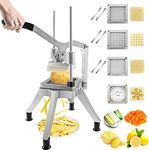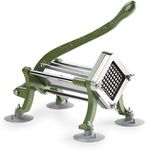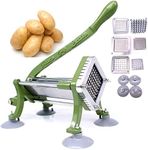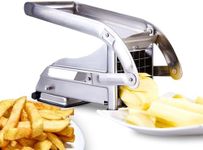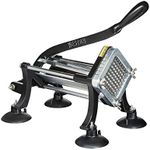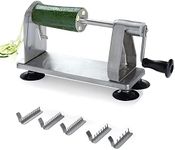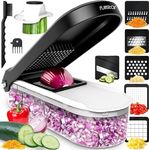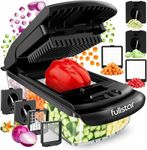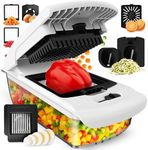Buying Guide for the Best French Fry Cutters
Choosing the right French fry cutter can make preparing homemade fries much easier and more enjoyable. The best cutter for you depends on how often you plan to use it, the types of potatoes or vegetables you want to cut, and how much space you have in your kitchen. Understanding the key features will help you pick a cutter that matches your needs and makes the process safe, efficient, and fun.Blade Size and TypeBlade size refers to the thickness and width of the fries the cutter produces. Some cutters come with interchangeable blades for different fry sizes, while others have a fixed size. Thinner blades make shoestring fries, while thicker blades make steak fries. If you like variety or want to cut other vegetables, look for a cutter with multiple blade options. If you always prefer one style, a fixed blade may be simpler and sturdier.
Material and Build QualityFrench fry cutters are usually made from plastic, stainless steel, or a combination of both. Stainless steel is more durable and better for frequent use, while plastic models are lighter and easier to store. If you plan to use your cutter often or with harder vegetables, a sturdy, mostly metal construction is best. For occasional use or softer potatoes, a plastic model may be sufficient.
Ease of CleaningCleaning is important because food can get stuck in the blades and frame. Some cutters are dishwasher safe, while others need to be washed by hand. If you want to save time and effort, look for a model with removable parts that are easy to clean. If you don’t mind hand washing, a simpler design may work for you.
Mounting and StabilitySome cutters are designed to be mounted on a countertop or wall, while others have suction feet or non-slip bases for stability. Mounted cutters are more stable and better for large batches, but they require installation and more space. Suction or non-slip models are portable and easy to store, but may move around during use. Choose based on how much space you have and how often you’ll use the cutter.
Handle Design and LeverageThe handle is what you use to push the potato through the blades. Longer handles provide more leverage, making it easier to cut through tough potatoes. Some handles are cushioned for comfort. If you have limited hand strength or plan to cut large quantities, look for a cutter with a long, comfortable handle. For occasional or light use, a shorter handle may be fine.
CapacityCapacity refers to the size of potato or vegetable the cutter can handle at once. Larger capacity cutters can process bigger potatoes without cutting them down first, saving time. If you often use large potatoes or want to cut other big vegetables, choose a cutter with a larger chamber. For smaller potatoes or occasional use, a standard size will work.


